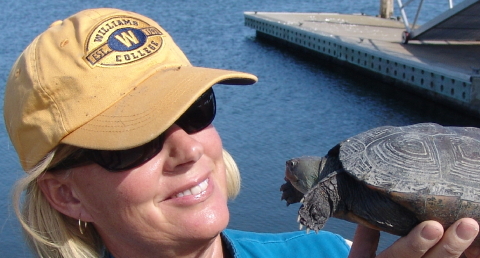Five-Year-Old Male Painted Turtle
It’s Sunday night, April 21st, and the temperature reads 33 F, one degree above freezing in this seemingly endless transition from winter to spring in the Great White North. Today, although bathed in sunlight, never broke out of the 40s with a chilled north wind. Despite these conditions, certain wetland turtle species have decided enough is enough, and they’re proceeding directly to spring mating … with or without the cooperation of Mother Nature.
Two Male Spotted Turtles @ SouthCoast Bog
We visited an abandoned SouthCoast cranberry bog mid-morning. The sun shined brightly and a small chorus of spring peepers chirped plaintive calls for love. The past two weeks we found several female spotted turtles in the shallow bog channels where local spotteds travel annually for a mating aggregation. This morning we found the first two male spotted turtles of the year at the site; a sure sign that the mating part of the annual aggregation was about to commence.
Young Male Painted Turtle Caught in the Act
We returned to the bog in the afternoon. This time we observed a young male painted turtle and a mature female in mating behavior and we captured the male in flagrante delicto. The female was discrete enough to disappear under muck and debris at the bottom of the channel.
Five-Year-Old Male Painted Turtle
We don’t often see painted turtles young enough to age like this ~ five-year-old male. Annual growth lines quickly disappear. The lines on this specimen very barely discernible. As for his gender, this turtle’s extremely long claws and thick, long tail clearly marked him as a male painted. Of course these morphological features merely confirmed the activity we witnessed with his mature female companion.


















